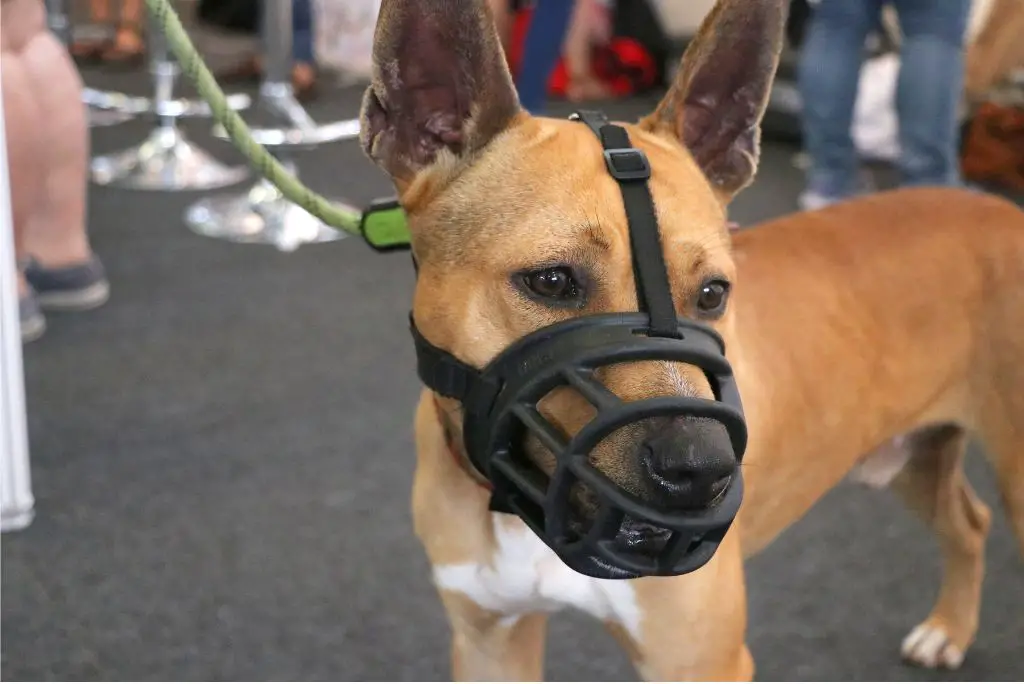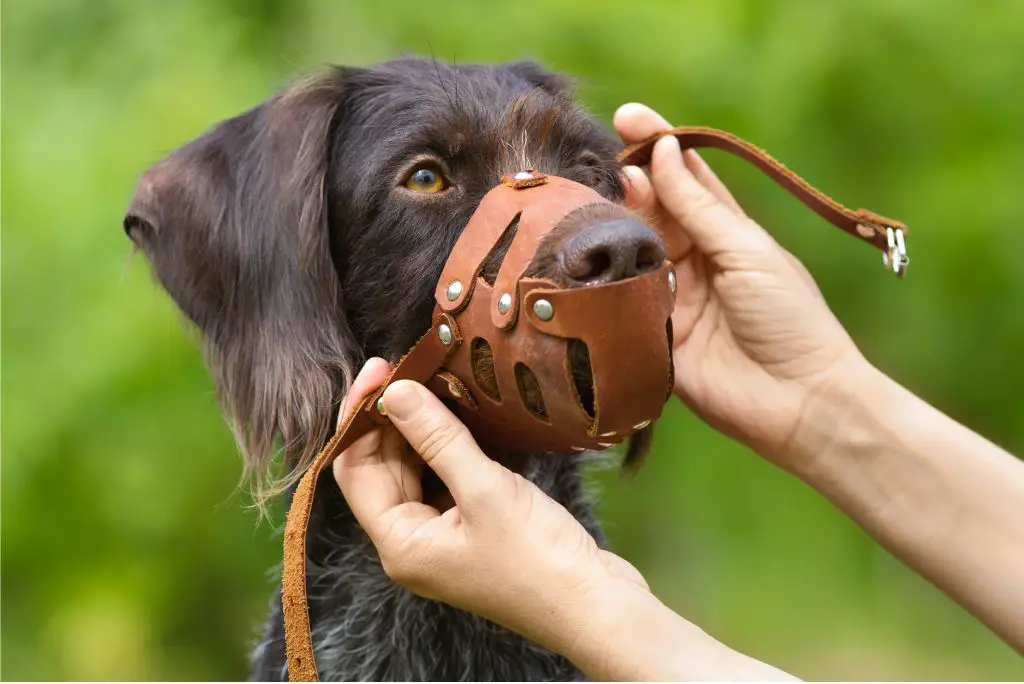A dog muzzle is a tool used to prevent biting and it’s placed over a dog’s snout. Some dog owners are completely against them as they worry that their dogs won’t be able to drink, pant, or even breathe when wearing one. But, when fitted properly, dogs can do all this without any trouble. Although the use of dog muzzles is controversial, they can be useful and even necessary in some situations. It’s likely that, at one point in every dog’s lifetime, they’ll face a situation where they’ll need to use a muzzle for their own safety, for the safety of a human, or both.
Because of this, and even if you can’t foresee a situation where you’ll need to use it, it’s still a good idea to understand which situations can call for the need to use a dog muzzle and how you can train your dog to use one. That way, if the day comes, muzzling your dog won’t be a cause for stress.
Five situations that can require the use of a dog muzzle
Dog muzzles are used to prevent dog bites and nothing more. Dog owners should never use them to prevent or try to correct behavioral problems such as chewing or barking by forcing their dogs’ mouths shut. These kinds of behaviors should be addressed with consistent training and after understanding what is causing them in the first place. Muzzles should only be used for short periods of time, always under supervision and never as punishment or with the intent of teaching a lesson. Otherwise, they can put dogs under unnecessary stress which will only make them reject muzzles, making it impossible to use them when they’re necessary.

With that said, there are some situations where it’s appropriate to use a dog muzzle to keep everyone safe such as:
- In case of an emergency: there’s a higher risk of biting when dogs are injured regardless of their character under normal circumstances. When they’re in great pain, they can try to bite anyone that tries to transport them or treat their wounds. In these cases, using a muzzle will help keep you and anyone assisting your dog safe.
- Whenever a dog has a history or a higher risk of biting: unfortunately, due to their experiences or other behavioral problems, some dogs can have a higher risk of biting other dogs or people. In these cases, although muzzling won’t solve the problem, it can give you some peace of mind while you’re working on training your dog with the help of a dog trainer or behaviorist.
- Any situation where there’s a higher risk of biting: there may be some situations that can be upsetting for your dog and lead you to worry about the risk of a dog bite. This can be the case in situations such as a vet appointment or examinations. Scenarios like these may call for the temporary use of a muzzle to keep everyone safe but it still requires training to modify this behavior overall.
- Grooming sessions: when professionally trained, most dogs can tolerate and even enjoy being groomed. But when you’re still in the process of working on getting your dog used to things like getting its nails trimmed, ears cleaned, or even a simple bath, using a muzzle can help keep you safe.
- Whenever legislation requires specific breeds to be muzzled: although studies have shown that behaviors have little to do with breeds, there are still some states that catalog some dog breeds as “dangerous” or “aggressive” and require them to wear a muzzle whenever they’re in public areas.
How to train your dog to use a muzzle?
Getting your dog used to wearing a muzzle takes time, patience, and consistent training. This means that the first time you use a dog muzzle should never be a time when you need it. As you saw before, most of the times when you’ll need to use a muzzle are situations that are already stressful for your dog as they are. Without any prior training, using a muzzle will only add to this stress.
Fortunately, dogs can be trained to accept the use of a muzzle if you do this training in situations that don’t involve stress and always rewarding positive behavior. Even when your dog accepts being muzzled, it’s important to keep training in stress-free conditions so your dog doesn’t start associating the muzzle with negative experiences.

When you want to train your dog to use a dog muzzle, grab some treats and follow these steps over a few days, and progress at your dog’s pace without forcing it. Each of these steps should be repeated until your dog is comfortable with what you’re doing:
- Let your dog sniff the muzzle and reward.
- Touch your dog’s snout with the muzzle and reward.
- Hold the muzzle with one hand and treat with the other in a way that your dog needs to put its snout inside the muzzle to get the treat. Don’t fasten it just yet.
- Slip the muzzle on your dog’s snout without fastening it and reward.
- Put on the dog muzzle, fasten it, reward, and remove immediately.
- Put on the dog muzzle, fasten it, slowly count to five, reward, and remove it.
- Slowly increase the time that the muzzle is on and reward as you go.
Making sense of it all
Dog muzzles can seem scary, but they may be needed in several situations to ensure everyone’s safety. With proper training, your dog can get used to wearing one but it’s important that you pick a dog muzzle that has the right size and style for your dog. Properly fitted muzzles allow dogs to pant, drink water and eat treats. If you need help picking the best one for your dog, talk to your vet about it.
Remember that a dog muzzle should only be used for short periods of time to prevent biting. It should never be used as punishment or to prevent behavioral problems. Those need to be addressed through proper training sessions with the help of a professional.
